Price’s Versatility Reveals Deep Roots, Talent
Lesley and Cliff Price show off their formidable art collection.
After 37 years with the Atlanta Journal-Constitution and now with the AJT, , Jaffe’s focus is lifestyle, art, dining, fashion, and community events with emphasis on Jewish movers and shakers.
A tour of the Price home is akin to a suspense novella, traversing cultures and countries with stops in Deutschland, Johannesburg and now Brookhaven. In their 1996 house anchored by heart of pine floors, Lesley and Cliff Price are at home in all corners of the world.
Memory laden, Lesley reveals her fascination with craft and process as she documents her family’s life in Germany alongside a formidable collection of South African art. “We were collecting South African art in the 1970s long before it became popular,” she said.
Cliff, one of the developers of The View at Chastain and Lofts at the Park, enjoys found objects that are both definitive and familiar. Lesley, an avid animal rescuer for Furkids, enjoys the scampering of numerous cats and one Lhasa Apso, Tumi, who reigns as king of the jungle. Lesley takes numerous curtain calls as she masters several art forms to relate her stories with imprinted designs. History loves company.
Dare to take the Price tour.
Jaffe: Share your family’s journey out of Germany.
Price: They left Berlin in 1933 before Nazi occupation. My grandfather Max Lesser manufactured clothing in Berlin. My great-grandfather had a recording studio and was making records from around 1880. Thus, they escaped with much of the family’s valuables. We even have the red gramophone supposedly used by Marlene Dietrich in the “[Murder on the] Orient Express” movie.
Here you see much of their oil paintings, furniture and photographs. The most sentimental thing was my father’s childhood postcards, which I have turned into an art form. I enlarged them on fine rice paper and used encaustic beeswax to achieve the artistic layered finish. Large versions of the series “Lieba Papa” were on display in the atrium of the Hartsfield-Jackson Atlanta airport in 2010.
The dramatic photograph of my grandfather chatting with my step-grandfather in the dining room illustrates the graph of the rise and decline of Germany. I have their passports where they were Xed out from citizens to noncitizens. Upstairs is my great-great-grandfather’s siddur and a gramophone record of my father’s bar mitzvah speech.
Jaffe: Lay out your personal artistic journey.
Price: I first became a fashion designer in my father ‘s clothing factory in Johannesburg. I also took up pottery in South Africa. Later in Atlanta I became a kitchen designer for Poggenpohl and SieMatic [Atlanta Decorative Arts Center].
Using infrared film, I have won prizes for my photography, the newest of which

was part of Atlanta Celebrates Photography 2019.
The black and white images I shot of Rabbi Yossi New’s first daughter’s wedding that was held in Piedmont Park. I shot these using my first film camera, a Nikon 90s. As the light dimmed and using a slow shutter speed, I achieved the blurred images in an effect I still like to use in my work today.
Jaffe: Your sister is an accomplished artist.
Price: Susan Woolf, who has a doctorate in art and resides in South Africa, created earlier paintings depicting the sadness of apartheid. Her newer work “Talk To Me,” a language for both sighted and blind people, was displayed at the MoMA in Manhattan. She was also featured on a postage stamp in South Africa in 2010 for this.
Here we have several of her oils:
In the great room, the triangle showing Zulus wielding sticks in political upheaval was displayed at the Carter Center. “Hostel Crisis,” a truly terrible time in South Africa.
“The Train” upstairs is also part of the crisis series.
My sister and her daughter threw oranges out of the train to little boys. Older boys stole the oranges, and she was horrified. Message: “Think carefully how you give charity.”
Also, “Crisis” black and white charcoal in the dining room depicts violence in Soweto.
Jaffe: What work of others do you collect?
Price: We focus on found objects and South African pieces. Cliff adores these wire motorcycles, the model airplane flying in the great room ceiling and the yellow road front-end loader, a toy built accurately to scale by a worker in the gold mines.
We love anything that is unusual. Encasing the fireplace, Bedouin woven pieces, an entrance to a Bedouin tent, a baby pouch and a woven rug that was used on horses.
The dining room basket by Billie Ruth Sudduth (North Carolina) is similar to her piece in the White House. She actually traded for a very fine Zulu beer strainer.
We exhibit other international credentialed South African artists, many of whom participated in City Gallery East 1996 for the Olympics “Common and Uncommon Ground: South African Art to Atlanta” sponsored by Mercedes-Benz.
We have many works by William Kentridge, known for his charcoal film animations, and Peter Mthombeni, whose ceramic “Child Shouldering Adult Responsibilities” 1996 is in our great room. The bowl next to it is by Ardmore Studios.
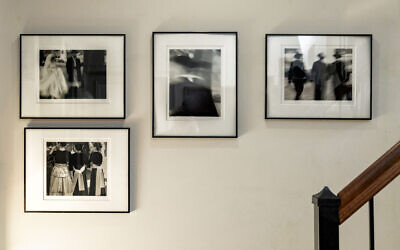
Willem Boshoff is known as strongly intellectual for his visual poetry, often using South African sand and soil.
Others are by Victor Pasmore, Claude Jammet Tait and Gladys Mgudlandlu.
Jaffe: What is in your lower level?
Price: One of the bodies of work in my studio is 1889 glass negatives that I bought from an estate. My interest was in the beautiful costumes. This was also produced in the printmaking studio and layered with beeswax.
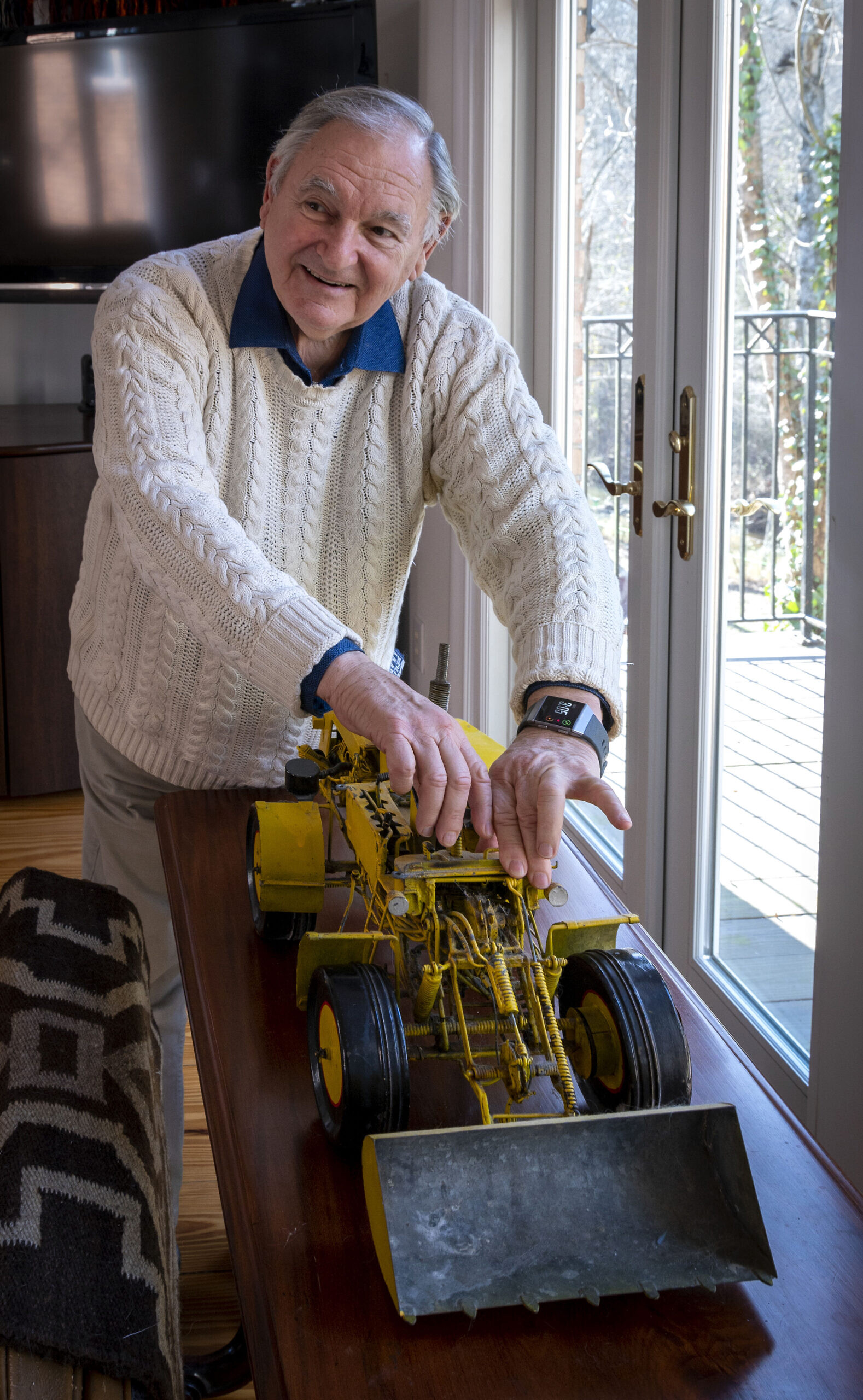
My first solo show in Atlanta was about growing up in South Africa influenced by “My Sucker Thumb Story” as Struwwelpeter circa 1850, a scary German storybook about a little boy whose thumb was cut off. The image has my granny’s dishtowels (Messertuch or knife cloth) layered with Struwwelpeter.
Jaffe: What will you do next?
Price: I plan to tackle cold wax painting and another project where I photographed a burned-out piano factory on Peters Street. The fire was accidentally started by firecrackers years ago. The original building was a candy factory in what was then an Atlanta industrial area (1902).
I enjoy a mixture and anything that is unusual!



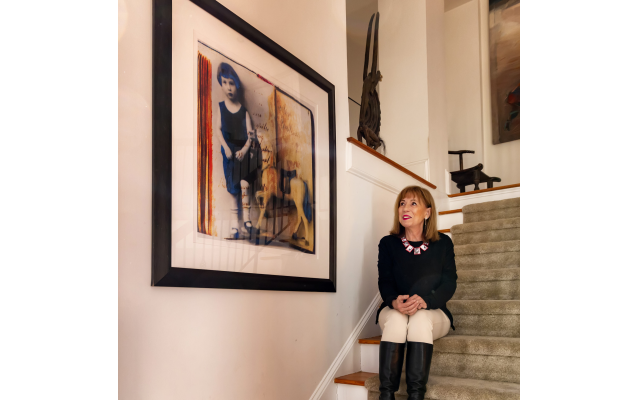
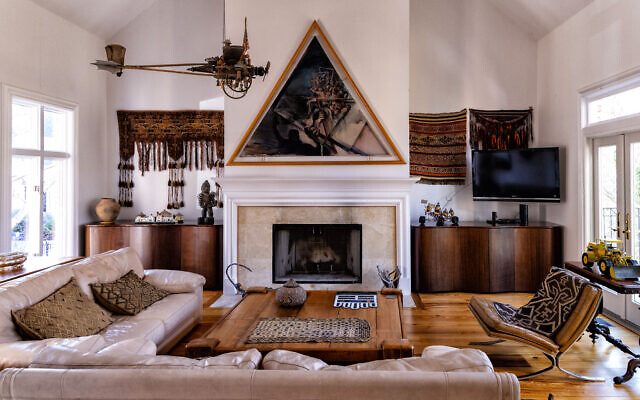
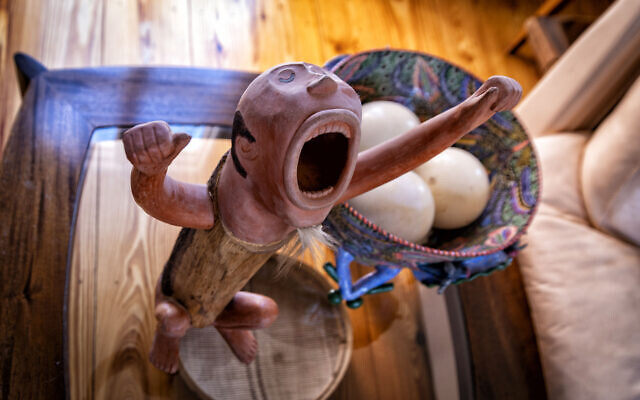
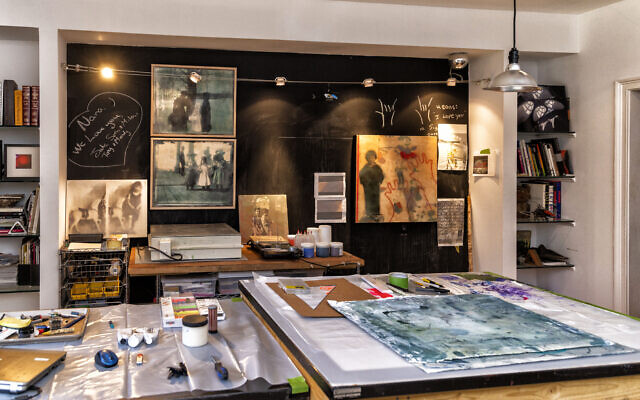
comments